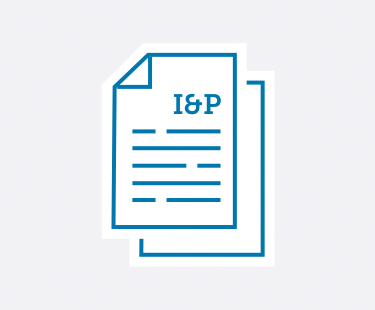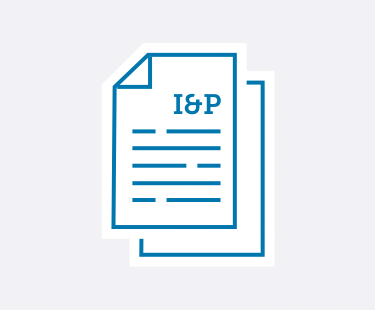

Learn practical strategies to handle emerging trends and leadership challenges in private schools.
No matter if you’re a School Head, Admission Director, Development Director, Board member, or any other private school administrator—Ideas & Perspectives®, ISM’s premier private school publication, has strategic solutions for the pervasive problems you face.
- Tuition not keeping pace with your expenses? In I&P, explore how to use strategic financial planning to create your budget and appropriately adjust your tuition.
- Enrollment dropping off? Discover how to implement the right admission and enrollment management strategies that engage your community—and fill your classrooms.
- Trouble retaining teachers? Learn how you can best support your teachers using ISM’s Comprehensive Faculty Development framework. Your faculty members will become more enthusiastic about their roles—which ultimately improves student outcomes.
- Fundraising campaigns not as successful as you’d hoped? Implement ISM’s practical advice and guidance to build a thriving annual fund, construct an effective capital campaign, and secure major donors—no matter your community size or location.
- Not sure how to provide professional development—for you and your staff? Learn ways to develop and fund a successful professional development strategy. You can improve teacher-centered satisfaction and growth, which in turn strengthens student-centered learning.
- Problematic schedule? You can master the challenges of scheduling with the help of ISM’s practical advice, based on our experience with hundreds of schools and our time-tested theories.
- And so much more.
I&P has shared targeted research, up-to-date insight, and sound theory with school leaders since 1975. More than 8,500 private school decision-makers find the answers to their schools’ administrative and governance matters in our advisory letter. We give you the strategic answers you need.
As an ISM Silver or Gold member, you not only receive issues online and in print 10 times a year, but you have access to 900+ articles in our web archive. Need help? It’s at your fingertips! Learn more and sign up for ISM's membership here.
Search
See the articles from our latest issue of Ideas & Perspectives.
Managing Risk With Basic Emergency Drills
Volume 41 No. 9 // July 22, 2016
Basic drills (evacuation, reverse evacuation, shelter-in-place, lockdown and “run”) are critical aspects of your school’s crisis and emergency response plan (ERP). Well thought-out and practiced drills help you protect your students and school community.
1. Already a member? Click here to login.
2. Not a member? Click here to become a member.
3. Not sure? We'll help you figure it out.
The Board’s Fiduciary Responsibility: The Audit Committee and the Finance Committee
Volume 41 No. 8 // June 27, 2016
We often hear the phrase “the Board has fiduciary responsibility.” This phrase merely means that each Board member has the legal responsibility to act solely in the best interests of the school they serve. To facilitate good fiscal stewardship, ISM recommends two finance-oriented committees to assist the Board in this crucial area: the Finance Committee and the Audit Committee. Let’s explore the roles of the two committees.
1. Already a member? Click here to login.
2. Not a member? Click here to become a member.
3. Not sure? We'll help you figure it out.
The Annual Strategic Scheduling Meeting
Volume 41 No. 8 // June 27, 2016
A school’s schedule is not simply tactical. A strategic element of the school, the schedule facilitates the delivery of the school’s mission as it fosters high-quality graduates. Great schedules put students in the best learning environment and deploy its resources (time, people, space and program) in alignment with the school’s Purpose and Outcome statements (mission, Characteristics of Professional Excellence, and Portrait of the Graduate). A well-designed schedule makes a positive difference in students’ lives and provides the school a strategic advantage in its market.
1. Already a member? Click here to login.
2. Not a member? Click here to become a member.
3. Not sure? We'll help you figure it out.
Private-Independent School Leadership and Upper/Middle-Class Families
Volume 41 No. 8 // June 27, 2016
Columbia University researchers have published startling—and, for private-independent school leaders, profoundly disturbing—findings from a comprehensive project focused on characteristics of upper- and middle-class youth and their families.1 This is the population from which private-independent schools in the U.S. draw most heavily. The researchers’ overarching conclusion is that “youth in upwardly mobile, upper/middle-class community contexts … [are] statistically more likely than normative samples to show serious disturbance across several domains.” Many of these problems are associated with and/or leading to rampant substance abuse, barely manageable levels of stress, and persistent high anxiety.
1. Already a member? Click here to login.
2. Not a member? Click here to become a member.
3. Not sure? We'll help you figure it out.
Facility Design and Strategic Planning
Volume 41 No. 7 // June 6, 2016
School Heads and Boards of Trustees must pay attention to both the operational and strategic elements of facility planning and design. Facilities might more typically be thought of as operational—while the Board approves the development of new facilities and engages the designer, the school works with the designer to establish needs and solutions. However, both you as School Head and your strategic partner the Board President might take a closer look at this process, which needs more integration than this simple separation of roles assumes.
1. Already a member? Click here to login.
2. Not a member? Click here to become a member.
3. Not sure? We'll help you figure it out.
Selecting Your Insurance Broker
Volume 41 No. 7 // June 6, 2016
As Business Manager, your selection of the “right” insurance broker or agent (or doing due diligence on your current broker) can produce many benefits, including: better assuring you have the appropriate types and levels of coverage to protect the school; providing you with risk management protocols and techniques to help prevent or mitigate claim; and making your life much easier.
1. Already a member? Click here to login.
2. Not a member? Click here to become a member.
3. Not sure? We'll help you figure it out.
The Marketing Communications Director: The School’s Bridge
Volume 41 No. 7 // June 6, 2016
For the School Head, the marketing communications function poses several dilemmas. It may be a leadership role or a service role. Is it key to the school’s operations or is it tangential? Marketing can involve creating product and placing advertising, or it may have strategic dimensions that require higher-order skills. Should it report to “me” or should it report to someone else? Who is in control of communications and what does that look like in the age of smartphones? A person may direct communications, or this may be diffuse set of actions with inputs and outcomes in all school areas
1. Already a member? Click here to login.
2. Not a member? Click here to become a member.
3. Not sure? We'll help you figure it out.
The Board’s Education Committee: Justifiable?
Volume 41 No. 7 // June 6, 2016
As Board President, you are aware that a perennial question discussed by school leaders is the “validation” of a school’s student programs: curriculum, cocurriculum, pedagogy, vertical alignment, and other components in a private-independent school’s mission-delivery system. After all, any school’s mission has its strongest impact in classrooms and on playing fields.
1. Already a member? Click here to login.
2. Not a member? Click here to become a member.
3. Not sure? We'll help you figure it out.
Cost-Effective Solutions for Managing Risk
Volume 41 No. 6 // May 9, 2016
Your risk assessment team has completed the data-gathering portion of its task and now works through the process of mitigating any risk discovered. The major challenge, after identifying risk, is to prioritize the areas where the school is most vulnerable, and strike the often-delicate balance between the need to control each risk and the cost involved. As the Business Manager, you serve as supervisor of this project. Your next step is to reconvene the assessment team to review the findings and identify the most cost-effective ways to strengthen the school’s safety net.
1. Already a member? Click here to login.
2. Not a member? Click here to become a member.
3. Not sure? We'll help you figure it out.
Marketing Your School’s Advisory Program
Volume 41 No. 6 // May 9, 2016
ISM recently updated and reported on its survey database of parent opinion on the factors most influential in families’ choice of a private-independent school. While the perceived quality of the academic program is highly important, several high-ranking factors taken together reflect an emphatic desire for a safe and caring community. “Faculty care and concern” and “Character development/values” were the top two variables. Recognize and take action on the strategic opportunities this information provides by developing and implementing a marketing and communication plan to highlight how your school delivers these institutional qualities, particularly through the mission-based advisory program that engages and supports students in your middle and upper divisions.
1. Already a member? Click here to login.
2. Not a member? Click here to become a member.
3. Not sure? We'll help you figure it out.


